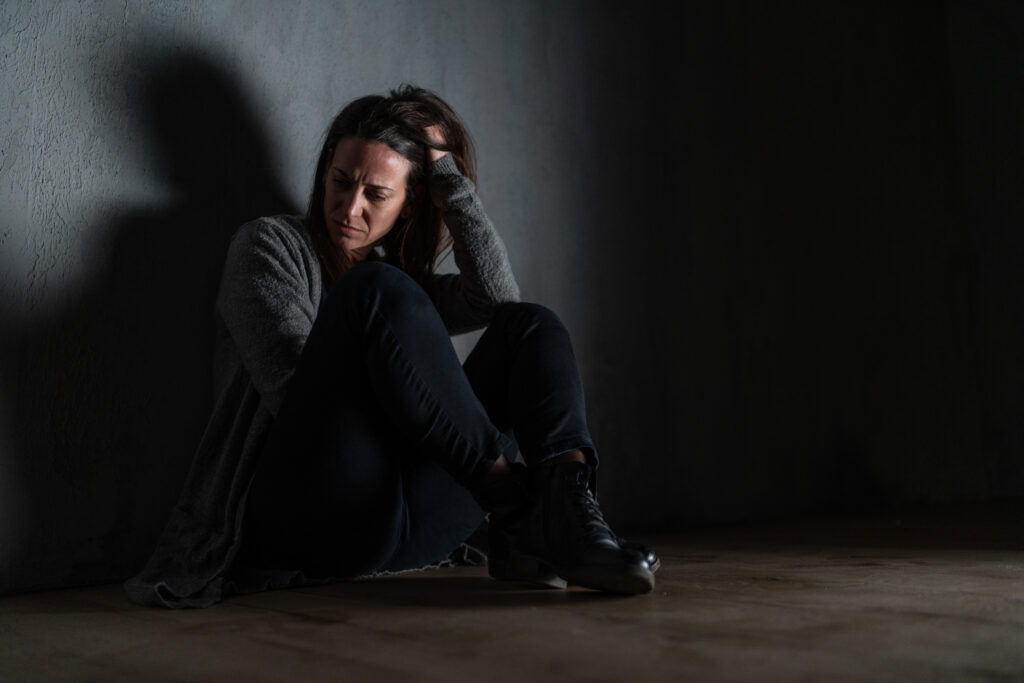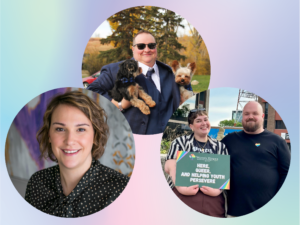By Victoria Mitchell, Wood’s Homes Addictions Specialist.
Trauma = long term anxiety
Trauma = fear of the unknown
Trauma = loss of control
Trauma = unable to have human contact
If you remember the last entry in this series, I spoke about how using a substance is a negative maladaptive strategy to cope with trauma.
Now that we’re in our second lockdown, many of us may be thinking about some of the things we’ve given up over the past year – hugging friends and family members, meeting a child born during the lockdown or celebrating the life of a loved one who passed away – and for some, it may be a long list.
We all hoped that this would pass quickly and that we would come out unscathed.
When stress levels are impacted, some people may choose to increase their consumption of such substances or partake in activities that are outside of their normal behaviour. The key here though, is that we know the pandemic will eventually end – we must allow this reality to shore up our resiliency and show ourselves that we will not allow this to break us.
Historically, when options for connection become limited, the pressure to use substances increases. Let me break this statement down a little more.
Risk factors for someone who is MORE likely to abuse/overuse their substance of choice are:
- Marginalization
- High stress levels
- Trust issues
- Lack of access to basic needs
Now, let’s look at protective factors for this same population:
- Positive community connections
- Feeling safe and secure
- Good balance of healthy coping strategies
- Self-confidence
While we all deal with challenges that may affect our ability to keep up healthy habits or avoid stress, the big question is: What happens to those living within the most vulnerable sectors when you add even more barriers to safety? When you’re already on the cusp of an inability to cope with your trauma, you may turn to negative maladaptive coping strategies and the use of substances to help to numb your pain.
I want us, the service providers, to start becoming more active in our communities, and to voice our collective thoughts and provide solutions. We need to look at the greater health care community to say there is something missing when those we are here to help do not feel supported.
11 people a DAY die in Canada from an overdose.
11 people. 11 mothers. 11 fathers. 11 kids. 11 lives.
All gone too soon while leaving loved ones behind.
As a person who is employed and affected by addictions in the community, I’m feeling energized. As we continue to navigate COVID-19, I want us to pay attention to the gaps in the conversation between isolation and addictions. How, as a community, did we allow for this many people to die from overdose and not make this a daily part of our professional discourse? How are we looking forward toward prevention in new ways given this current reality? These are the questions that haunt me at night. They not only keep me up with worry, but also sadness for the lives that are needlessly lost.
Recently, I had a client who, through many attempts, was ready, willing and wanting to go to treatment. However, the youth tested positive for COVID-19 during detox.
Because this client tested positive for COVID-19, they were instructed to reapply for treatment in March. I was not only frustrated by this decision, but I was tired and angry. I had committed to helping this client, but now the support they deserved – and had taken all the right steps to receive – had been moved out of reach for them.
How many lives will we lose due to fear, inconsistent messaging and inability to help someone in need?
Anger is an emotion I know very well and I’m learning to use it in a positive way. I feel that in this trying time of physical distancing, we’re all dealing with our own anger in many forms. I’ve made the decision to continue to develop my skills in traversing the addiction realm. Reducing perceived barriers is a skill – a fine art some might say – and when it is done properly, a client shouldn’t even know about the barriers to accessing a service.
I do not have the answers, but I do have the need to stand up and look around at all of my peers, mentors and co-workers at Wood’s Homes and say, “We are the last people standing in a world of chaos, and we need to show others how to do better – to be better.”
During my time at Wood’s Homes as the Addiction Specialist, I’ve been able to witness resiliency in my peers and co-workers, and I’m continually amazed by each and every one of us. Not a single person lost sight of the end goal of this young person to attend treatment. I’m very pleased to be able to say that we were able to watch this youth get their necessary and much-deserved treatment at another facility.
Strength, resiliency and having the voice for those who cannot stand for themselves is part of Wood’s Homes mantra: ‘We Never Say No’ and ‘We Never Turn Anyone Away’, and in this instance, the most important part – ‘We Never Give Up’. Not a single person who was involved in this client’s case management gave up, nor did they take no as the final answer.




